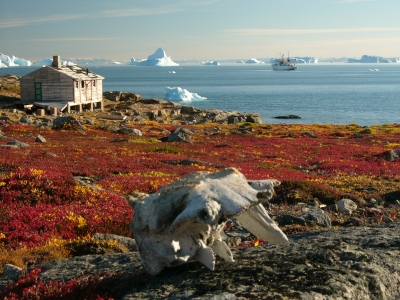
The tundra refers to a vast, flat, treeless Arctic region of Europe, Asia, and North America in which the subsoil is permanently frozen. Tundra ecosystems are also found on the mountaintops here, where the climate is cold and windy, and rainfall is scant. These lands are covered with snow for much of the year, which melts during the summer. Yet it hosts a few species of wildlife acclimatised to harsh conditions. As the tundra faces the threat of global warming, so do its inhabitants.
Plants and Animals in Tundras:
Mountain goats, sheep, marmots, and birds live in mountain—or alpine—tundra and feed on the low-lying plants and insects. Hardy flora like cushion plants survive in the mountain zones by growing in rock depressions, where it is warmer and they are sheltered from the wind.
The Arctic tundra, where the average temperature is -34 to -6 degrees Celsius (-30 to 20 degrees Fahrenheit), supports a variety of animal species, including Arctic foxes (Vulpes lagopus), polar bears (Ursus maritimus), gray wolves (Canis lupus), caribou (Rangifer tarandus), snow geese (Anser caerulescens), and musk oxen (Ovibos moschatus). The summer growing season is just 50 to 60 days, when the sun shines up to 24 hours a day.
The relatively few species of plants and animals that live in the harsh conditions of the tundra are essentially clinging to life. They are highly vulnerable to environmental stresses like reduced snow cover and warmer temperatures brought on by global warming.
Climate Change Impact on Tundras
The Arctic tundra is changing dramatically due to global warming, a term that falls within a wider range of trends scientists now prefer to call climate change. The impacts in this region are broad and somewhat unpredictable. Animals that are typically found farther south, like the red fox (Vulpes vulpes), are moving north onto the tundra. This means the red fox is now competing with the Arctic fox for food and territory, and the long-term impact on the sensitive Arctic fox is unknown.
Other tundra denizens, such as the wolf spider (Lycosidae spp.), are growing bigger and thriving. Shrubs are getting taller, contributing to declines in the sensitive groups of lichen that caribou and other species depend on for food. Lakes and ponds are evaporating or draining away.
Ctedit : National geographic society
Picture Credit : Google




